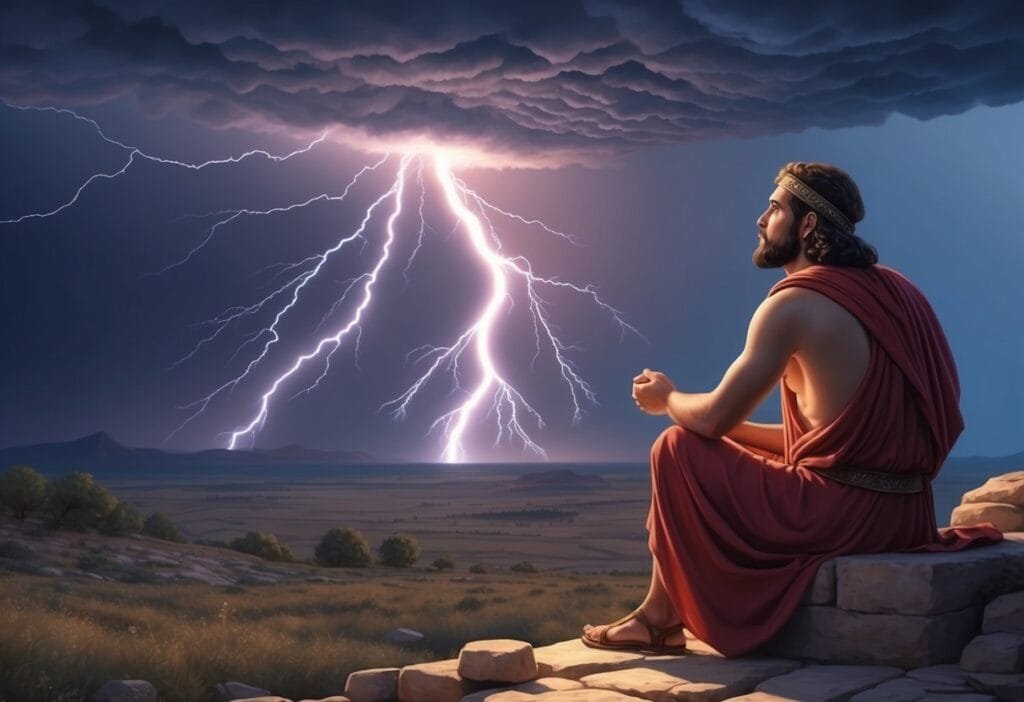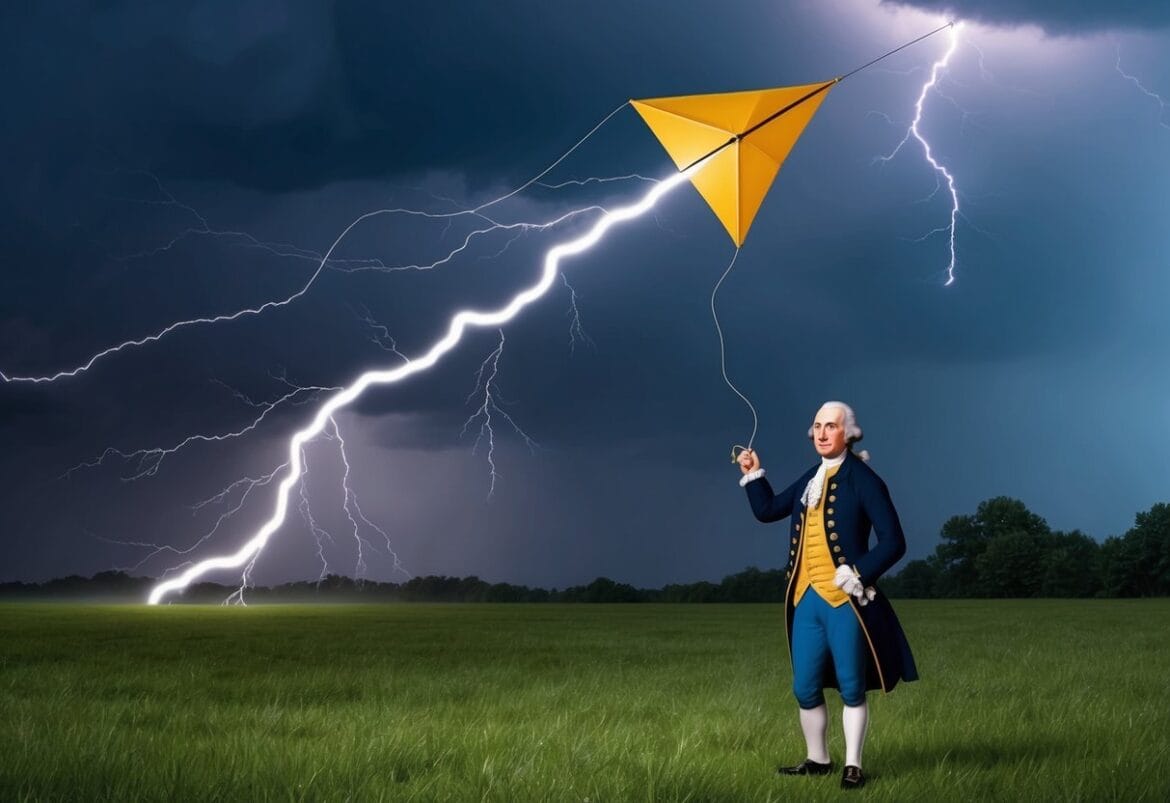Table of Contents
The history of electricity is a tale of human curiosity and innovation. From ancient Greek philosophers noticing static charge to modern power grids spanning continents, electricity’s history is long and fascinating. People have been interested in electric phenomena for thousands of years, but the real breakthroughs came in the 18th and 19th centuries.

Scientists like Benjamin Franklin, Alessandro Volta, and Michael Faraday made key discoveries that let us harness electricity’s power. Their work paved the way for inventors like Thomas Edison to create practical electric lights and motors. Soon, electric power transformed cities and industries around the world.
Today, electricity is a vital part of modern life. It powers our homes, businesses, and technologies. As we face new energy challenges, understanding electricity’s past can help guide its future.
Summary & Video Documentary
- Electricity’s history spans from ancient observations to modern power systems
- Key experiments in the 18th and 19th centuries enabled practical applications
- Electricity has revolutionized society and continues to shape our world
Ancient Observations and Early Concepts

People in ancient times noticed strange effects that we now know were caused by electricity. They saw sparks, felt shocks, and watched objects stick together in odd ways.
Thales of Miletus and Early Theories
Thales of Miletus, a Greek philosopher, made some of the first recorded observations about electricity around 600 BC. He rubbed amber with fur and saw it could attract small objects like feathers. This led him to think amber had a special power.
Thales thought this power came from a soul inside the amber. While his idea wasn’t correct, it was an important first step in studying electricity.
Other Greek thinkers built on Thales’ work. They tried to explain why rubbing certain materials created strange effects. These early ideas helped spark later research into electricity.
Amber and Static Electricity
Ancient Greeks discovered static electricity by accident while playing with amber. Amber is fossilized tree sap that turns into a hard, golden substance.
When rubbed with cloth or fur, amber builds up an electric charge. This charge can make small objects stick to it. The Greeks called amber “elektron,” which is where we get the word “electricity.”
People found other materials that acted like amber:
- Glass
- Sulfur
- Certain gemstones
These discoveries showed that the strange effects weren’t unique to amber. They were clues to a bigger mystery about how the world works.
Pioneering Discoveries and Key Experiments

Early experiments with electricity led to groundbreaking insights. Scientists uncovered the nature of electric charge and its connection to other forces.
Benjamin Franklin and Kite Experiment

Benjamin Franklin made key discoveries about electricity in the mid-1700s. His famous kite experiment showed that lightning was a form of electricity.
Franklin flew a kite during a thunderstorm. He attached a metal key to the kite string. When lightning struck, electricity traveled down the wet string to the key.
This proved lightning and electricity were the same thing. Franklin’s work led to the invention of the lightning rod. This device protects buildings from lightning strikes.
Franklin also came up with terms like “positive” and “negative” to describe electric charge. His ideas helped shape our understanding of electricity.
Michael Faraday and Electromagnetic Induction
Michael Faraday made major breakthroughs in the 1800s. He discovered electromagnetic induction, a key principle of electricity.
Faraday found that a changing magnetic field could create an electric current. He showed this by moving a magnet through a coil of wire.
This discovery led to the invention of electric generators and motors. It formed the basis for producing electricity on a large scale.
Faraday’s work revealed the deep connection between electricity and magnetism. He proved they were two aspects of the same force: electromagnetism.
His experiments paved the way for the modern use of electricity in technology and industry.
The Advent of Electric Power Systems
Electric power systems emerged in the late 19th century, revolutionizing how energy was produced and distributed. This period saw the creation of the first power plants and the development of competing electrical current technologies.
First Electric Power Stations and Bulb
The first commercial power plant opened in 1882 on Pearl Street in New York City. Thomas Edison designed this station to power electric lights for nearby buildings. It used six steam-powered generators to produce direct current (DC) electricity.
Edison also invented the first practical incandescent light bulb in 1879. This bulb lasted for 40 hours and paved the way for widespread electric lighting.
Soon after, other cities built power stations. These early plants typically served small areas and powered street lamps and some homes and businesses.
Alternating Current vs. Direct Current
A major debate arose over the best way to transmit electricity: AC or DC. Thomas Edison backed DC, while Nikola Tesla and George Westinghouse promoted AC.
DC electricity worked well for short distances but lost power over long lines. AC could be easily transformed to higher voltages, allowing for long-distance transmission with less power loss.
Tesla’s AC system won out. In 1893, Westinghouse used AC to light the Chicago World’s Fair. Two years later, they built a large AC power plant at Niagara Falls.
This “War of Currents” ended with AC becoming the standard for power grids. Today, we still use AC for most electricity transmission and distribution.
Expansion and Commercialization of Electricity
The growth of electricity use transformed homes and cities while also reaching rural areas through policy initiatives. This expansion led to major changes in daily life and economic development.
Electricity in Homes and Urban Centers
Cities quickly adopted electrical power in the late 19th and early 20th centuries. Electric lighting replaced gas lamps on streets and in buildings. Homes started using electricity for lighting, appliances, and heating.
New gadgets like electric irons, fans, and vacuum cleaners became popular. Factories switched to electric motors, boosting productivity. Public transit systems added electric streetcars and subways.
Electricity demand grew fast. Power plants got bigger to meet needs. By 1925, half of U.S. homes had electricity.
Rural Electrification and Policy Impacts
Rural areas lagged in getting electricity. In 1935, only 10% of U.S. farms had power. The government stepped in to help bring electricity to rural regions.
The Rural Electrification Act of 1936 was key. It gave loans to set up electric cooperatives. These co-ops built power lines to farms and small towns.
By 1950, 90% of U.S. farms had electricity. This brought modern appliances and farm equipment to rural areas. It raised living standards and farm output.
Rural electrification had big economic and social impacts. It helped reduce the gap between urban and rural life in America.
Technological Evolutions and Innovations
The history of electricity saw major breakthroughs in power generation, transmission, and device creation. These advances shaped modern electrical systems and applications.
Developments in Generation and Transmission
Generating electricity on a large scale became possible in the 1870s. Belgian engineer Zénobe Gramme built the first practical direct-current generators. This led to the world’s first power plant opening in Godalming, England in 1881.
Electricity transmission improved rapidly. Early systems used direct current, which had distance limitations. The invention of transformers and alternating current allowed power to travel farther.
Generation from renewable sources began emerging in the 20th century. Hydroelectric dams came first. Later, solar, wind, and other clean energy technologies developed.
Inventions of Electric Motor and Generator
The electric motor and generator were crucial inventions. Michael Faraday created the first electric motor in 1821. It converted electrical energy into mechanical movement.
Faraday also discovered electromagnetic induction in 1831. This principle allows generators to produce electricity from mechanical motion. These inventions enabled countless electrical devices and machines.
Improvements to motors and generators continued. More efficient designs used new materials and manufacturing techniques. This helped spread electrical technology to many areas of life.
Electricity’s Impact on Society and Culture
Electricity revolutionized society and culture in profound ways. It transformed daily life, work, and communication while reshaping economic systems and social structures.
Socio-economic Influences of Electricity
Electricity radically changed productivity in workplaces. Factories could operate longer hours and increase output. New industries emerged, creating jobs and economic growth.
The power grid enabled widespread electrification of homes and businesses. This spurred demand for electric appliances and gadgets.
Rural electrification programs brought power to farms and small towns. This reduced urban-rural divides and improved quality of life.
Electricity costs influenced business decisions and household budgets. Energy became a key economic factor.
Cultural Shifts and Technological Dependence
Electric lighting freed people from daylight constraints. Work and leisure could extend into evening hours.
Home appliances changed domestic life. Tasks like cleaning and cooking became easier, altering gender roles and family dynamics.
Mass media like radio and television shaped cultural trends. They connected people to national and global events.
Electric transportation systems changed urban layouts. Streetcars and subways influenced how cities grew.
Society grew increasingly reliant on electricity. Power outages could disrupt daily life and commerce.
Contemporary Challenges and the Future
The electricity industry faces major shifts as it adapts to sustainability demands and technological advances. New methods of power generation and distribution are emerging to address environmental concerns and changing energy needs.
Renewable Energy and Sustainability
Renewable energy capacity additions set records in recent years as the world moves away from fossil fuels. Solar and wind power are leading this transition. Their costs have fallen dramatically, making them competitive with traditional sources.
Many countries now aim for 100% renewable electricity in the coming decades. This shift brings challenges in grid management and energy storage. Intermittent renewables require flexible backup power and advanced forecasting.
Utilities are investing heavily in renewables while retiring coal plants. Some are exploring green hydrogen as a clean fuel option. Microgrids powered by renewables are bringing electricity to remote areas.
Electricity Storage and the Smart Grid
Energy storage is crucial for managing variable renewable output. Batteries are rapidly improving in performance and cost. Grid-scale battery installations are growing worldwide.
Other storage technologies show promise:
- Pumped hydro
- Compressed air
- Thermal storage
- Hydrogen fuel cells
Smart grid technologies are modernizing electricity networks. Advanced meters and sensors enable real-time monitoring and control. This improves reliability and efficiency.
Demand response programs let consumers reduce usage during peak times. Electric vehicles may serve as distributed storage, feeding power back to the grid when needed.
AI and big data are optimizing grid operations. Self-healing grids can quickly isolate faults and reroute power. These innovations are creating a more flexible and resilient electricity system.

